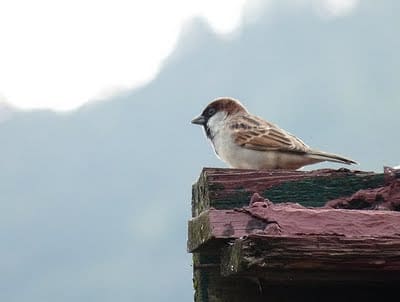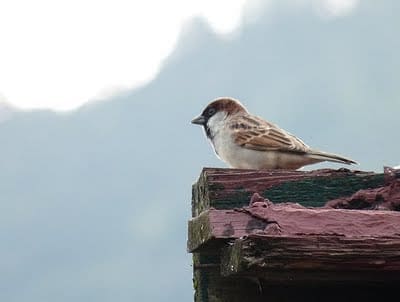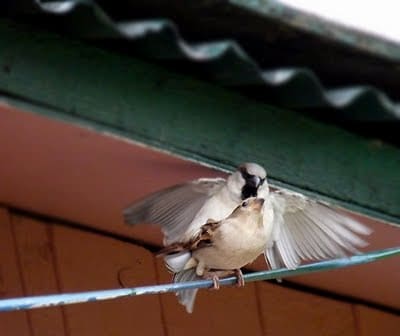
Like thousands of coins jingling in hundreds of fists, the chirruping of sparrows heralds dusk. Trees quiver as roosting flocks fuss like train passengers arguing over berths. The din dies down with the fading light and all is quiet again. Until the morning, when breakfast squabbles are made public and flocks prepare to go about their business foraging around homesteads, fields and forest clearings.
Few people give sparrows a second look, but the first glance itself evokes tender smiles because nearly everybody has observed the disappearance of House Sparrows from cities. However, they are still up and about in villages where old-fashioned houses offer them the shelter of eaves and awnings and their pastoral environs an ample supply of food.
In the Himalaya, though, it may serve us well to keep our eyes peeled for the Russet Sparrow (Passer rutilans cinnamomeus). Its call is similar to the House Sparrow’s, but males in breeding plumage are easy to tell by their rich cinnamon crowns and backs. For this reason, it was earlier called the Cinnamon Sparrow (a much more evocative name, in my humble but effete opinion). This male (in winter plumage) was photographed at the Garhwal Mandal Vikas Nigam guest house in Ukhimath, Uttarakhand among a flock of House Sparrows (Passer domesticus).
The House Sparrows, of course, were busy making their tribe increase. Which raised the following questions:
a) Do the two species interbreed where their ranges overlap?
b) Do House Sparrows breed year round while Russet Sparrows have a fixed breeding season?
Someone in the know might be able to tell me.
Photographs © Bijoy Venugopal. All rights reserved.
- Indian Nightjar, Sweet Child O’Mine - February 21, 2024
- TL;DR – What colour are a Black-winged Kite’s eyes? - February 13, 2024
- TL;DR – White-naped Woodpecker Double Bill - November 16, 2023



No, the Cinnamon Sparrow doesn't hybridise with the House Sparrow—they don't even flock together.
I have to agree that Cinnamon Sparrow sounds homely.
@Sandy: Thanks! Coming from you, that has to be a genuine compliment and no platitude. Honoured!
True, some names have been changed for the better. But, for instance, the Dollarbird used to be called the Broad-billed Roller – and that somehow seems appropriate because the bird indeed resembles a roller in flight. "Dollar" holds no meaning for us in India (the name, btw, comes from the round white underwing patch visible when the bird is in flight.
Nice shots bijoy. Love the first one- perfect feel. + 1 on the namings. Thankfully some are being changed for the better as well!
True! Chestnut-Shouldered Petronia is another antiseptic name — of the bird that Salim Ali used to know fondly as the Yellow-throated Sparrow.
Cinnamon Sparrow sounds homely and I must say that I like it too. Shame they keep changing well-established names all the time!